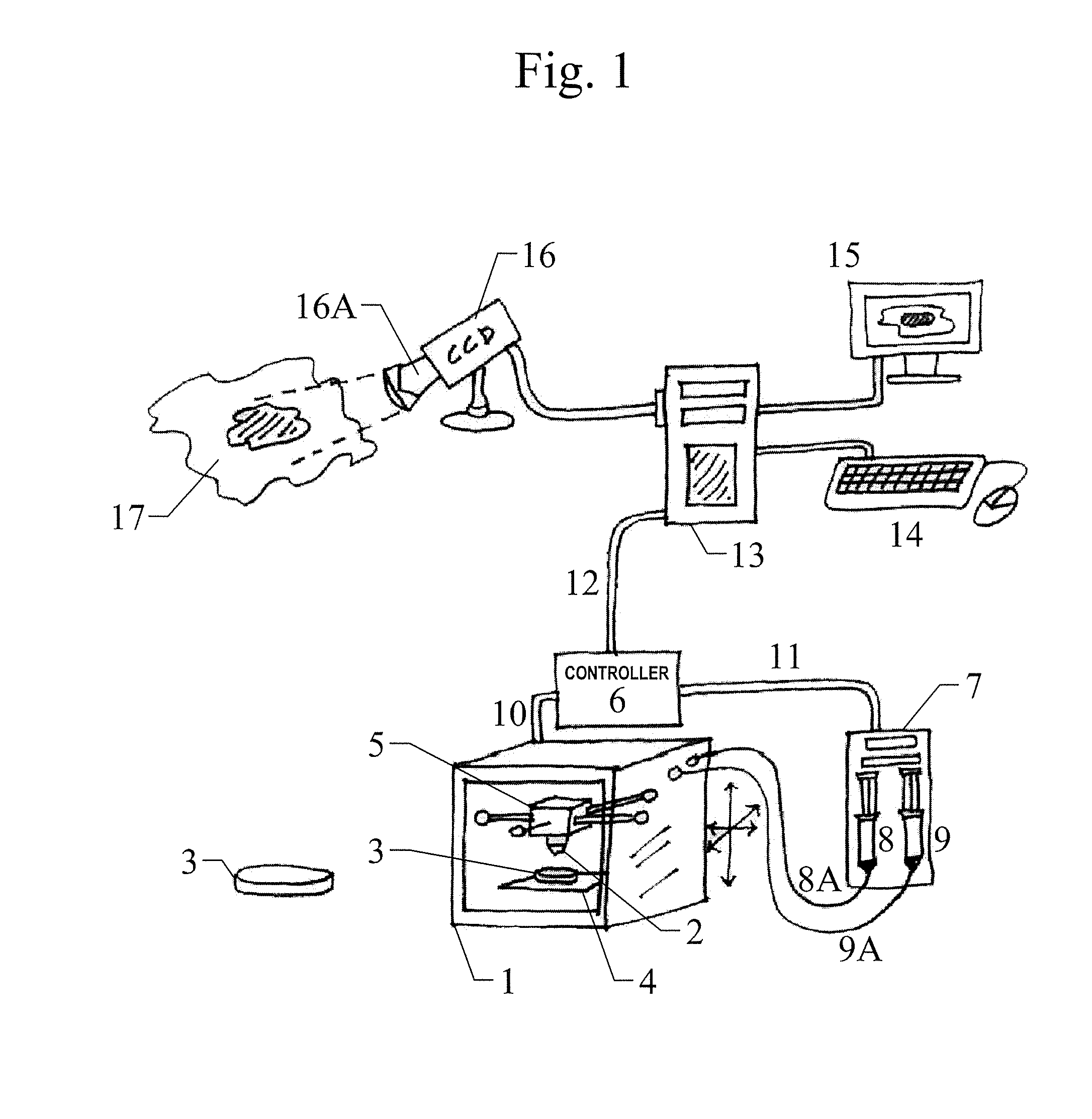Skin printing and auto-grafting
a skin and autografting technology, applied in the field of medical science, can solve the problems of unresolved problems, unmet needs, and unsatisfactory needs of skin autografts, and achieve the effects of reducing the time for regeneration, and improving the cell proliferation method
- Summary
- Abstract
- Description
- Claims
- Application Information
AI Technical Summary
Benefits of technology
Problems solved by technology
Method used
Image
Examples
example 1
[0094]In one inventive example, as may be appreciated with reference to FIG. 1, an inventive computerized skin printing system comprises a three-dimensional (3D) printer 1. Preferably the 3D printer 1 is cooled or temperature-controlled. An example of a 3D printer 1 is a 3D printer capable of printing living cells. The 3D printer 1 comprises at least one dispenser head 2 from which emerges cells that are being printed onto a surface 3 (such as, e.g., an agar plate) which is accommodated on a platen 4 within the 3D printer. The dispenser head 2 is attached to print head 5 which is positionable in (x, y, z) dimensions, which positioning is controlled by controller 6. Controller 6 also controls a syringe pumping system 7.
[0095]Syringe pumping system 7 comprises syringe 8 in which is contained skin cells harvested from the patient for whom the auto-graft product is being made and syringe 9 in which is contained material which does NOT include the patient's skin cells, such as, e.g., bov...
example 2
[0102]Application of the dissociated cells and other agents by the 3D printer, specifically, the configuration of the cell dispenser / applicator / syringe / air-brush, is dependent upon the type and depth of the wound. The number of “layers” or “passes” the cell dispenser must take with each agent applied to the collagen matrix in this Example is at least one layer.
[0103]This approach of layering the patient's own fibroblasts, keratinocytes, etc., with commercially available amniotic membrane, growth factors, etc., is used to manipulate the healing process through wound supplementation with agents that are natural contributors to the wound healing process and specifically crucial for each particular wound type.
example 3
[0104]Examples of techniques are as follows.
PUM
| Property | Measurement | Unit |
|---|---|---|
| surface area | aaaaa | aaaaa |
| period of time | aaaaa | aaaaa |
| size | aaaaa | aaaaa |
Abstract
Description
Claims
Application Information
 Login to View More
Login to View More - R&D
- Intellectual Property
- Life Sciences
- Materials
- Tech Scout
- Unparalleled Data Quality
- Higher Quality Content
- 60% Fewer Hallucinations
Browse by: Latest US Patents, China's latest patents, Technical Efficacy Thesaurus, Application Domain, Technology Topic, Popular Technical Reports.
© 2025 PatSnap. All rights reserved.Legal|Privacy policy|Modern Slavery Act Transparency Statement|Sitemap|About US| Contact US: help@patsnap.com



